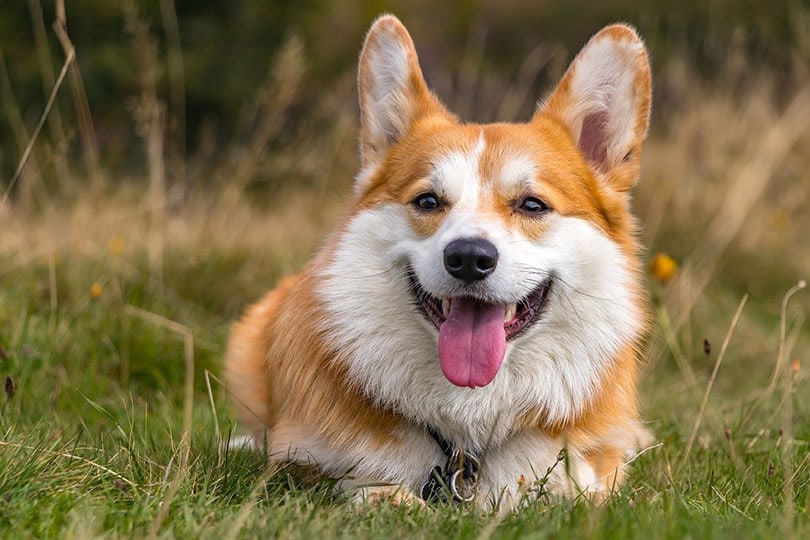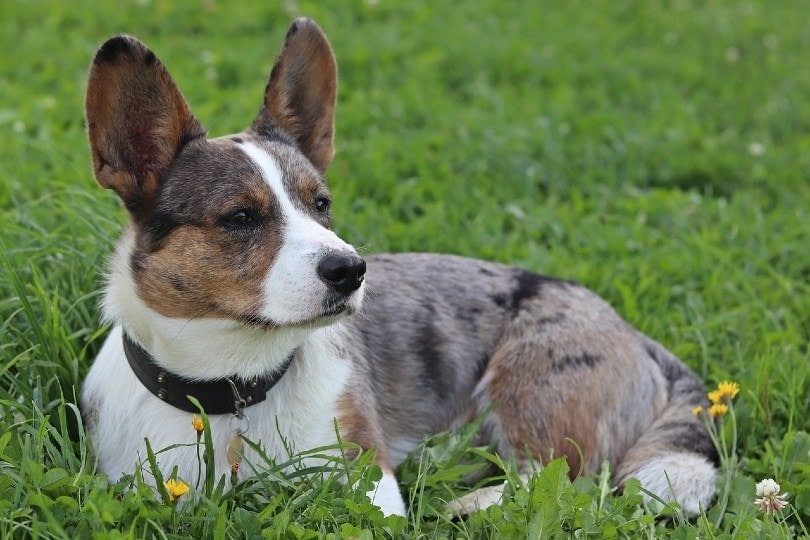What Were Corgis Bred For? The History of Two Breeds
By Luxifa Le
Updated on

Over the past few years, Corgis have become a wildly popular dog breed. It’s hard not to fall in love with their long bodies and short legs, but what were these dogs bred for? It may surprise you to find out that Corgis are a working breed. These lovable companion dogs were initially bred as cattle herding dogs.
 The Two Kinds of Corgi
The Two Kinds of Corgi
There are two kinds of Corgis, the Cardigan Welsh Corgi and the Pembroke Welsh Corgi. While their names are similar, they are considered distinct sub-breeds of the Corgi and have different histories that lead up to the current day.
Many different tales claim to recount the origin of the Welsh Corgi. Some say that the two breeds have shared ancestry. Others attribute the breeding of the Pembroke Welsh Corgi to Flemish weavers who began to breed the dogs in the 10th century.
History of the Cardigan Welsh Corgi

The Cardigan Welsh Corgi hails from Cardiganshire in South West Wales. Cardiganshire was an agricultural county, and Corgis were bred as their premier cattle-herding dogs. Corgis are part of a subset of herding dogs known as “heelers.” Heelers are trained to gently nip the heels of livestock animals like cattle and sheep to keep them moving until they reach the correct location.
Dwarfism is part of the Corgi breed standard—the word “corgi” means “dwarf” in Welsh. It gives them the appearance of having short, slow legs, but Cardigan Welsh Corgis are actually very agile. This short stature and high agility mean that Cardigan Welsh Corgis can dodge and weave between the cows’ feet as they herd them to avoid getting stepped on.
While a clear-cut point of origin is hard to identify for the Corgi, the breed’s influences seem to come from the Scandinavian Swedish Vallhund, brought to the area by Scandinavian settlers. Dog authorities have noted similarities between the two breeds.
However, in the 19th century, Welsh farmers transitioned from herding cattle to herding sheep. Corgis are great cattle herding dogs, but their skills pale when used with sheep. So, the breed’s popularity began to wane, and they took up a new position as companion dogs.
The first recorded Corgi to appear in a dog show entered the ring in 1925 in Wales. After that, Captain J.P. Howell called together breeders of both the Cardiganshire and Pembrokeshire Welsh Corgi varieties and formed the Welsh Corgi Club, which oversaw the breeding and standardization of both bloodlines. The breeds’ names would later be shortened to “Cardigan” and “Pembroke.”
The original club was home to many disputes between breeders of the two varieties, as show judges who bred one type of Corgi would often view their chosen bloodline more favorably.
The first Corgi to appear at the Crufts Dog Show—the world’s premier annual dog show—in 1927, and the first Corgi to win a dog show championship, a Pembroke named Shan Fach, was awarded her prize at Cardiff dog show in 1928.
The two breeds would continue to be judged together at events until 1934 when The Kennel Club separated the two into different breed standards that would be evaluated independently. At the first official registration of Cardigan Welsh Corgis, 59 Cardigans were registered compared to 240 Pembrokes. The owners who self-reported their dog’s heritage determined which breed the dog belonged to.
Cardigan Welsh Corgis continued to be less popular than Pembroke Welsh Corgis; only 11 dogs were registered in 1940 leading up to World War II. The Cardigan Welsh Corgi survived the war, but only 61 registered Cardigans made it out on the other side of the war.
The Cardigan Welsh Corgi was listed as one of The Kennel Club’s Most Vulnerable Dog Breeds in 2006, the list for any dog breed which registers less than 300 dogs in a calendar year, where they have remained ever since.
This listing led to an initial increase in registrations for the Cardigan Welsh Corgi, but those quickly declined, and it looked like the breed may be on the way out. However, in 2015 a boom of Cardigan registrations occurred with 124 puppies registered with The Kennel Club. However, this is nowhere near the numbers needed to revive the breed.
History of the Pembroke Welsh Corgi

The Pembroke Welsh Corgi lineage can be traced back to 1107 AD. It’s thought that Flemish weavers brought the dogs with them to Wales when they migrated to settle there. An ancient legend states that two children played in the forest when they stumbled upon a fairy funeral.
The mourning fairies gave the children two Corgi puppies to take with them, and the children brought them home and raised them into the breed we know today. Legend has it that the Corgi functioned as a mount for fairies, and they would ride them like horses. The base of the Corgi’s haunches has a fur line that grows much coarser than the rest of the fur. This line is the fairies’ saddle lines, according to Welsh legends.
Pembrokes were initially considered to be one breed along with the Cardigans. However, when they were originally registered with The Kennel Club, the two breeds were shown and judged together as one breed. This led to some disputes between members of the Corgi club, as locals tended to favor the Pembroke variety, which would show in the rankings and scoring of dogs.
Cardigan enthusiasts would break away from The Corgi Club about a year after its conception, leaving the Pembroke-favoring members behind. Pembroke enthusiasts worked hard to ensure that their breed standard was composed and distinct from the Cardigan breed standard.
In modern times, the Pembroke Welsh Corgi is a top-rated companion dog. Though they were added to The Kennel Club’s list of Most Vulnerable Breeds in 2014, they were removed from the list in 2018 following a boom in popularity that is primarily credited to their popularity on Instagram.
See Also:
- 9 Essential Corgi Supplies & Products for Your New Pup
- Red Corgi: Facts, History, Recognition & Pictures
 Final Thoughts
Final Thoughts
Corgis are easily one of the most Instagrammable dogs in the world. So, it’s no wonder that the social media platform had a hand in the breed’s revival. Unfortunately, the Cardigan Welsh Corgi has not been so lucky. Hopefully, people will soon recognize the beautiful and unique features of the Cardigan Welsh Corgi and help revitalize the breed!
Featured Image Credit: ozsvathcsilla, Pixabay

 Final Thoughts
Final Thoughts










